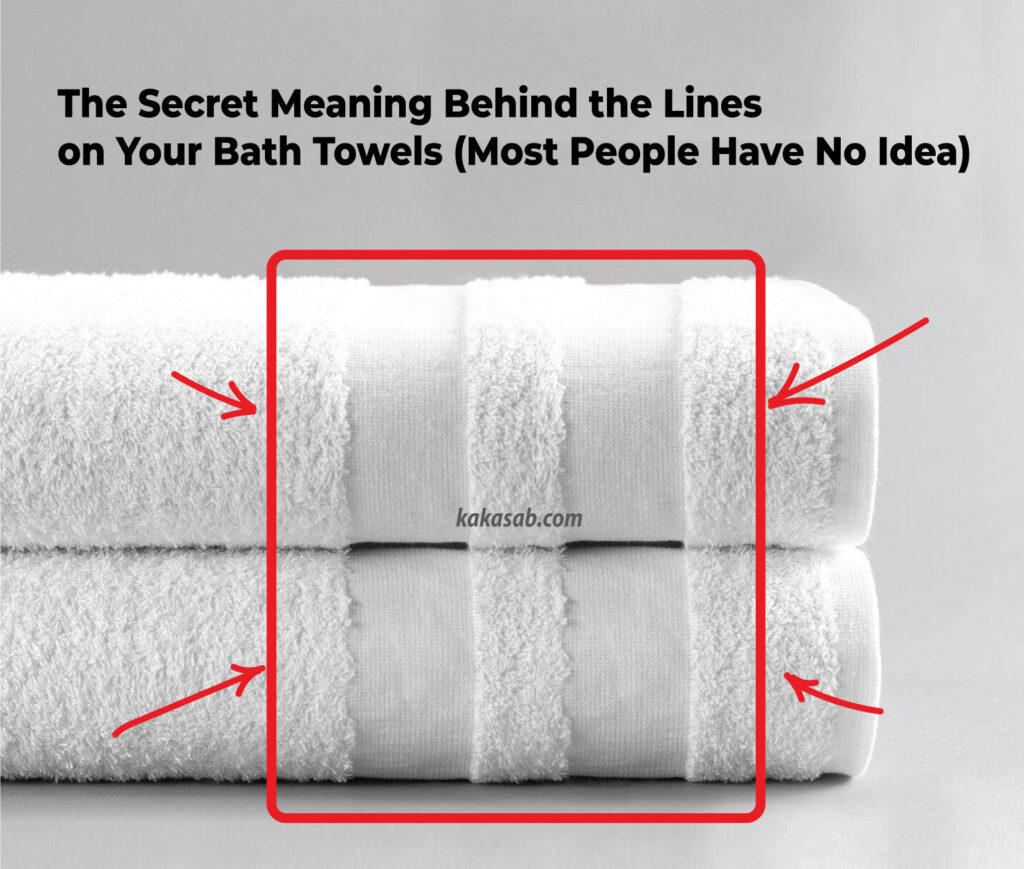The Secret Meaning Behind the Lines on Your Bath Towels (Most People Have No Idea)

You’ve probably seen them hundreds of times—those neatly woven lines, borders, or stripes on bath towels, often found an inch or two from the edges. They’re usually slightly more textured or smoother than the rest of the towel. But have you ever paused to ask: What do those lines actually mean?
The Truth Behind Those Strange Lines on your bath Towels
It started with a simple question—and suddenly, social media couldn’t stop talking about it: What’s the deal with that mysterious line on bath towels? While it’s not exactly a global crisis, this curious little design feature has sparked thousands of comments, theories, and even debates online. Forget the viral dress controversy—this is the latest everyday mystery that has everyone looking twice at their laundry.
Are they purely decorative? A manufacturing trick? Or do they serve a hidden purpose?
Let’s unfold the mystery behind the bands on bath towels—and why they’re more useful than they seem.
What Are These Lines or Bands Called?
In the textile industry, these lines are commonly referred to as “dobby borders” or “dobby patterns”. A dobby loom creates these unique weaves that contrast with the main terry cloth of the towel. The result is a visible band—often made of flat weave, while the rest of the towel is looped and fluffy.
A Touch of Design (Yes, It’s Partly for Style)
Let’s start with the obvious: it looks nice.
The dobby border adds a bit of elegance and polish to what would otherwise be a plain rectangle of fabric. It’s a subtle design element that makes a towel look more finished, upscale, and suitable for display in your bathroom or guest space.
Prevents Fraying and Shape Distortion
Here’s where it gets functional: those borders reinforce the towel’s edges.
Towels go through a lot—hot washes, heavy spins, daily use. The woven lines add structure to the towel, helping it:
- Maintain its shape
- Avoid stretching or curling at the ends
- Resist fraying and unraveling over time
So yes, the lines aren’t just pretty—they’re protective armor for your towel.
Helps with Folding & Stacking
Have you noticed that the dobby band helps you line up towels when folding?
Retail stores and luxury hotels often rely on those bands to create uniform stacks. When folded neatly with the band facing outward, towels look aligned and professional.
It’s an intentional design choice that makes your linen closet (or towel display) look chef’s kiss 👌.
Easier for Manufacturers to Align during Sewing
From a behind-the-scenes perspective, these bands also help towel manufacturers align hems, edges, and labels consistently. The dobby border provides a visual guide for the final stitching and quality control process.
Absorbency & Drying Time
While the dobby band adds structure, it’s usually less absorbent than the rest of the towel. That’s because it’s woven flat, without the loops that help soak up water. That’s why these bands:
- Dry faster than the looped parts
- Are ideal spots for embroidering names or logos (since loops would tangle thread)
So if your towel seems a little less “thirsty” near the band—now you know why!
Final Thoughts
The next time you reach for your bath towel, take a moment to appreciate that little line or stripe near the edge. What seems like a small design detail is actually:
- A style statement
- A structural safeguard
- A functional folding tool
- A manufacturing aid
- And an absorbency balance
Pretty impressive for a humble towel border, right?
So no, those lines aren’t just for looks. They’re a small but smart design element that makes your towel last longer, fold better, and feel a little more luxurious.
You may also like to read about Top Rated Smart Speakers of 2025 OR Why You Should Turn Off Wi-Fi When Leaving Home
Watch video on the secret lines on your bath towels: